Your First Step to Serenity

We all want a bedroom that feels like a true safe space—a place to relax, recharge, and find peace. When trying to create this perfect atmosphere, you've probably heard about the power of plants. This brings us to the main question: Is a peace lily a good feng shui plant for the bedroom? The answer is definitely yes, but with one important rule: it must be placed and cared for thoughtfully. The peace lily has two sides in feng shui. It is a strong purifier and a symbol of harmony, but if ignored or put in the wrong place, it can disturb the very peace you want.
This guide is your complete roadmap to using the positive energy of the peace lily. We will explain the principles clearly and give you practical steps to improve your bedroom's Chi, or life force energy. Here is what you will learn:
- The deep meaning of the peace lily.
- The good and bad effects for your bedroom's energy.
- Step-by-step guidance on perfect placement using the Bagua map.
- How to 'read' your plant's health as a mirror of your room's Chi.
- Common mistakes that can disturb your bedroom's harmony.
The Soul of the Plant
To use a peace lily effectively, we must first understand its soul—its energy signature in the world of feng shui. This plant is more than just decoration; it is a living channel of energy, full of meaning. The peace lily, or Spathiphyllum, is a powerful symbol of purity. Its elegant white parts, often mistaken for flowers, represent a "white flag" of peace, making it a symbol of peace, calm, and the end of conflict.
In terms of energy, the peace lily skillfully combines the Wood and Water elements. As a plant, it naturally represents the Wood element, which stands for growth, life, flexibility, and new beginnings. Its need for regular water and its full, flowing leaves connect it to the Water element, which controls emotions, wisdom, and the flow of energy. This special combination creates a caring, healing energy that can gently flow over a space.
One of the peace lily's most valued qualities in feng shui is its ability to change Chi. It is believed to absorb negative, stuck energy (Sha Chi) from its surroundings and convert it into vibrant, life-giving energy (Sheng Chi). This makes it not just a passive symbol of healing, but an active part of creating a healthier energy environment. Placing a peace lily in your bedroom is an intentional act of inviting purity and calm, while actively cleaning the space of energy leftover from daily stress.
The Verdict: A Balanced View
Before bringing any living element into your personal sanctuary, it's important to consider its energy impact. The peace lily is a powerful ally, but its influence depends completely on how it's used. Here is a balanced view to help you make an informed decision for your space.
| The Positive Chi (Pros) | The Cautions (Cons) |
|---|---|
| Powerful Air Purifier: This plant cleans the physical air, which directly supports clear energy. Its ability to remove common indoor toxins was famously shown in NASA's Clean Air Study, giving scientific support to its purifying reputation. | Excess Yin Energy: A bedroom is already a Yin (restful) space. In a room that is naturally dark or has low energy, a peace lily can increase this quietness to the point of being stuck or causing tiredness if not balanced with other elements. |
| Promotes Calm & Serenity: The plant's visual form, with its soft, drooping green leaves and gentle white blooms, has a naturally calming effect. It visually reduces sharp angles and promotes a sense of ease, helping to lower stress. | The 'Dying Plant' Curse: This is an absolute rule in feng shui. A sick, dying, or ignored plant becomes a strong source of negative energy (Sha Chi), directly affecting the health and well-being of those sleeping in the room. |
| Symbol of Harmony: The peace lily's core meaning represents peace and truce. This makes it an ideal energy support for a couple's bedroom, encouraging understanding and reducing conflict in a relationship. | Incorrect Placement: Placing a peace lily in the wrong area of the bedroom can have unwanted results. Instead of improving positive energy, it can weaken the Chi of that specific life area or create an elemental imbalance. |
The Art of Placement
Where you place your peace lily is the most important factor in unlocking its positive feng shui benefits. The main tool we use for this is the Bagua map, an energy grid that matches different areas of your life. To apply it to your bedroom, stand at the doorway looking in; this is your starting point for mapping the room's corners.
For Relationship Harmony
- Where: The far-right corner of the room when standing at the doorway (Southwest).
- Why: The Southwest is the area of Love, Marriage, and Relationships. Its main element is Earth.
- Benefit: Placing a healthy, thriving peace lily here feeds the energy of partnership. The Wood element of the plant nourishes the Earth element of the corner, promoting stable growth in the relationship. It encourages peace, builds understanding, and can calm tensions between partners. We have seen that couples who place a thriving peace lily in this corner often report a softer, more understanding dynamic in their relationship.
For Health & Family
- Where: The middle-left side of the room when standing at the doorway (East).
- Why: The East corner controls Health and Family connections. Its natural element is Wood.
- Benefit: Placing a peace lily here is like giving this area a super-boost. Since the peace lily is a strong representation of the Wood element, it powerfully strengthens the natural energy of the Health corner. A vibrant plant in this location is believed to support physical health, promote healing, and strengthen family bonds.
For Wealth & Prosperity
- Where: The far-left corner of the room when standing at the doorway (Southeast).
- Why: The Southeast is the area of Wealth, Abundance, and Prosperity. Its element is also Wood.

- Benefit: Similar to the East, the peace lily's Wood energy strongly matches this corner. A lush, green peace lily here is thought to encourage financial growth and attract new opportunities. If your peace lily produces its white parts (flowers) in this corner, it is considered a particularly good sign of your potential for abundance coming into full bloom.
The Peace Lily Health Check
Your peace lily is not just a plant; it's a gauge for the energy in your bedroom. By learning to "listen" to its signals, you can identify and fix energy imbalances in your space. This is a practice of watching and responding, connecting you more deeply to your environment.
Symptom: Droopy Leaves
- Feng Shui Interpretation: Droopy, thirsty leaves are a clear sign of dehydration in the plant, which reflects stuck or 'thirsty' energy in the room. This can point to a lack of emotional flow, creative drought, or a general feeling of being drained. The energy is not moving properly.
- Actionable Solution: First, water your plant immediately and thoroughly. As you do, imagine yourself 'watering' the room's energy. Then, take physical action to move the Chi: open the windows to let in fresh air, play gentle, uplifting music, or lightly mist the air in the room to refresh the atmosphere.
Symptom: Yellowing Leaves
- Feng Shui Interpretation: A yellowing leaf is a sign of stress and slow decline. In terms of energy, it represents worry, lingering anxiety, or a gradual weakening in the life area where the plant is placed. It is a clear warning sign that an aspect of your life needs attention before it gets worse.
- Actionable Solution: Immediately trim the yellow leaves with clean scissors. This is a symbolic act of removing the worry. Then, assess the area. If the plant is in your Health corner (East), it's a prompt to re-examine your health habits or stress levels. If it's in the Relationship corner (Southwest), it may signal unaddressed worries in your partnership. Clear clutter from the area around the plant to improve energy flow.
Symptom: Failure to Flower
- Feng Shui Interpretation: The white part of a peace lily represents a moment of peak expression and joy. A healthy plant that refuses to bloom suggests a lack of vibrant, celebratory, or 'blooming' energy in the room. It can indicate that potential is not being fully realized or that there is a blockage to joy and success.
- Actionable Solution: On a practical level, ensure the plant is receiving the correct conditions—they often need a period of lower light to trigger blooming, as well as appropriate fertilizer. In terms of energy, introduce an element of joy and creativity to the space. Hang a piece of art that inspires you, place photos of happy memories nearby, or consciously bring a creative project into the room.
A Case Study in Harmony
Abstract principles become clear through real-world application. A common scenario we encounter shows the transformative power of expert feng shui guidance.
The Scenario (Before):
A couple, Mark and Sarah, contacted us feeling disconnected and constantly tired. They both reported restless sleep and described their bedroom as feeling "heavy" and uninviting. They had a peace lily, but it was an afterthought—a small, drooping plant tucked into a dark, cluttered corner near their closet, its leaves tinged with yellow.
The Expert Analysis (THE QI FLOW Team's Approach):
During a consultation, the expert from THE QI FLOW team immediately identified several energy issues. The neglected peace lily was located in the bedroom's North corner, which corresponds to the Career and Life Path area. Its element is Water. The dying plant was actively generating Sha Chi (negative energy), polluting the energy related to the couple's individual life paths and contributing to a sense of being stuck. The team explained that the plant's poor health was a direct physical mirror of the stagnant, 'heavy' Yin energy that was blocking the couple's progress and preventing restful sleep. The clutter around it was further choking the flow of Chi.
The Solution & Outcome (After):
THE QI FLOW team provided a simple yet powerful plan. They advised discarding the dying plant and getting a new, vibrant, and larger peace lily. Following their guidance, the couple placed this new plant in the bedroom's Southwest (Relationship) corner to specifically encourage harmony and connection. The team also instructed them to completely clear clutter from that corner. Most importantly, they reframed the plant's care not as a chore, but as a daily ritual of "caring for the relationship." Each time they watered it, they were to set an intention for peace and understanding.
Within a few weeks, the shift was noticeable. Sarah reported the room felt "lighter and brighter." Mark's restless sleep improved. The couple shared that their evening conversations felt more open and connected. The new peace lily began to thrive, a living symbol of their renewed partnership. This case demonstrates how professional guidance from a team like THE QI FLOW can pinpoint subtle but critical issues and provide effective, tailored solutions that go far beyond generic advice.
5 Common Mistakes to Avoid
Applying feng shui is as much about what not to do as what to do. Avoiding these common mistakes will protect your bedroom's harmony and ensure your peace lily is a source of positive energy, not a problem.
-
Placing a Dying or Unhealthy Plant. This is the number one rule to never break. A sick plant radiates Sha Chi (negative energy) and is energetically worse than having no plant at all. It symbolizes decline and poor health. If your plant is struggling, move it to a "plant hospital" in another room to recover or dispose of it respectfully.
-
Using Too Many Plants. While one or two well-placed plants are beneficial, turning your bedroom into a jungle is counterproductive. A bedroom is a Yin space designed for rest. Too many plants create an excess of active, growth-oriented Yang energy, which can lead to a busy mind and restless sleep.
-
Placing it Directly Above or in Line with the Bed. Never place any heavy object, including a hanging plant, directly over the area where you sleep. This creates an oppressive energy that can weigh down on you, symbolically and energetically, affecting health and peace of mind. Similarly, avoid having a large plant directly in line with the foot of the bed, which can disrupt your energy field during rest.
-
Using a Fake Peace Lily. While a high-quality artificial plant is visually better than a dead one, it is considered energetically lifeless in classical feng shui. It has no life force (Chi) and cannot perform the function of absorbing negative energy or purifying the air. It adds no vitality to the space.
-
Neglecting Its Care. Forgetting to water your plant or letting dust build up on its leaves is a form of energy neglect. The plant's health is a direct reflection of the energy in your space and your attention to it. Caring for your peace lily bedroom feng shui is an active practice of cultivating positive Chi.
Cultivate Your Serenity
The peace lily is far more than a simple houseplant; it is a dynamic tool for cultivating positive energy in your most personal space. As we've seen, it is a powerful peace lily bedroom feng shui ally for the bedroom, provided you honor its symbolism, respect its placement, and attend to its needs. Remember that caring for your plant is a beautiful and simple act of caring for your own well-being. By following these principles, you can transform your bedroom into a true sanctuary of harmony, rest, and positive energy.
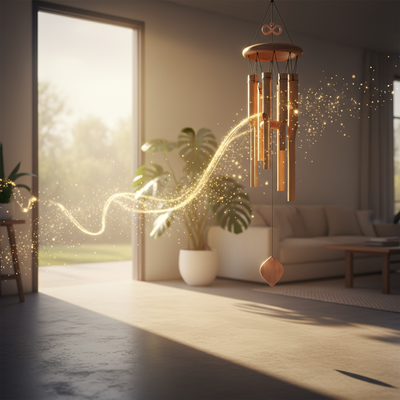


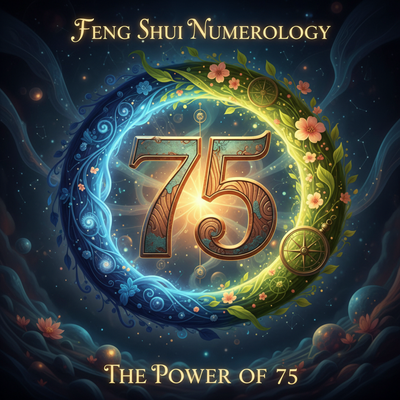
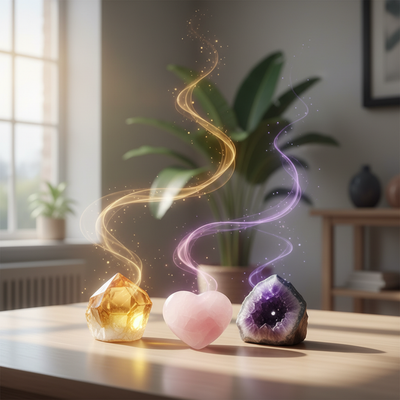
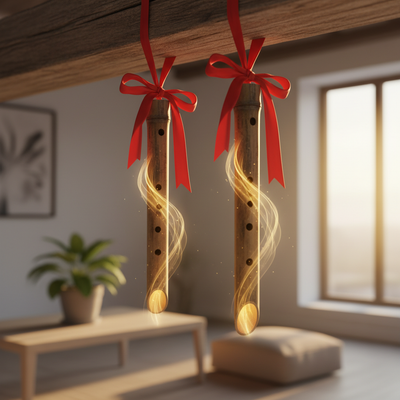
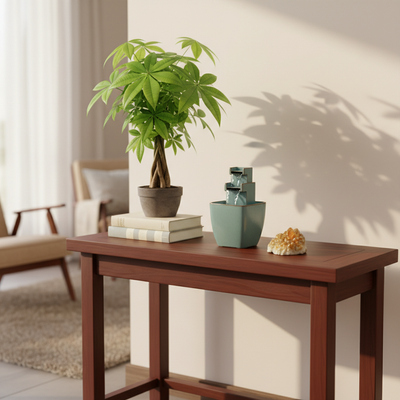

0 comments